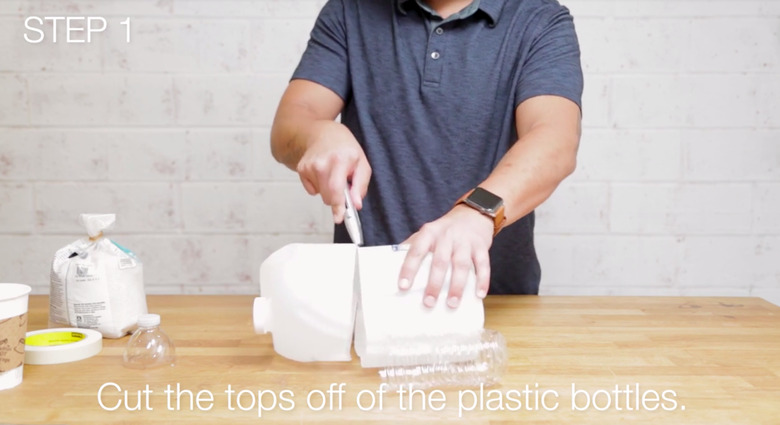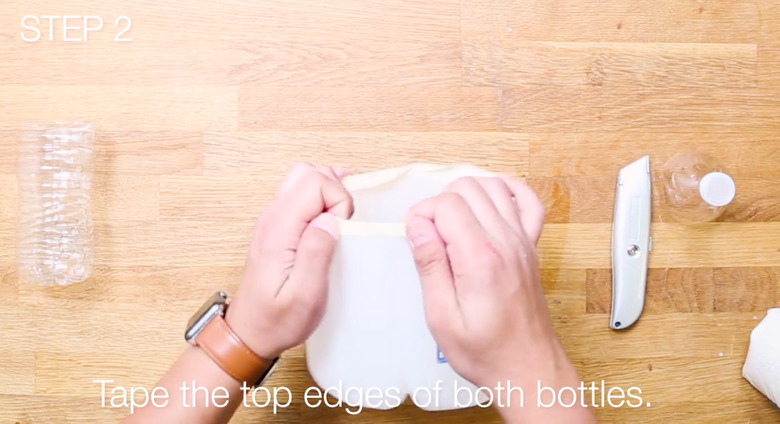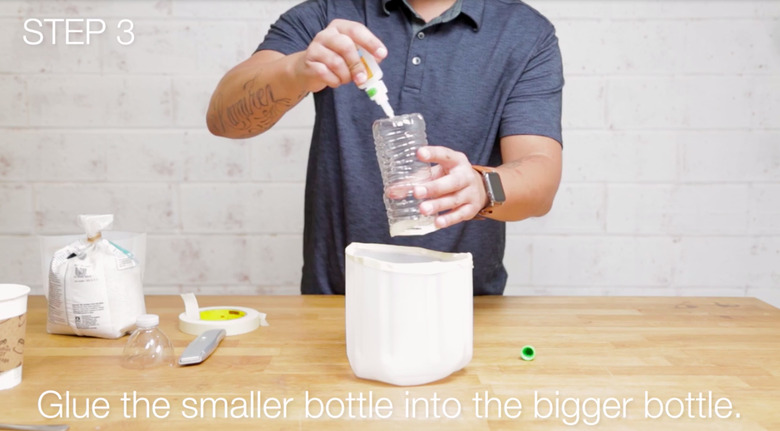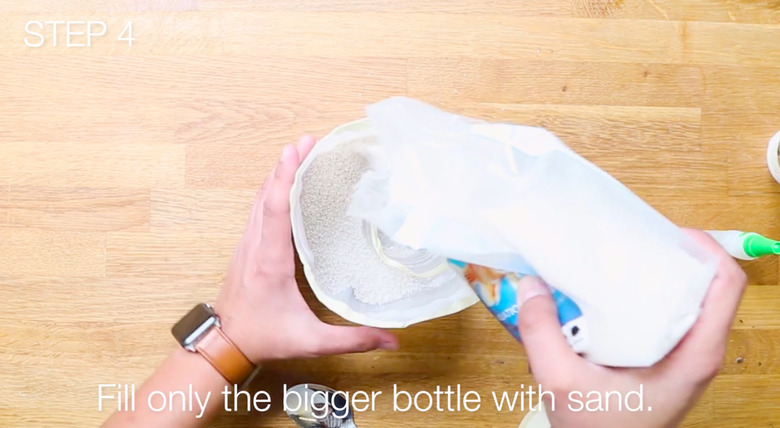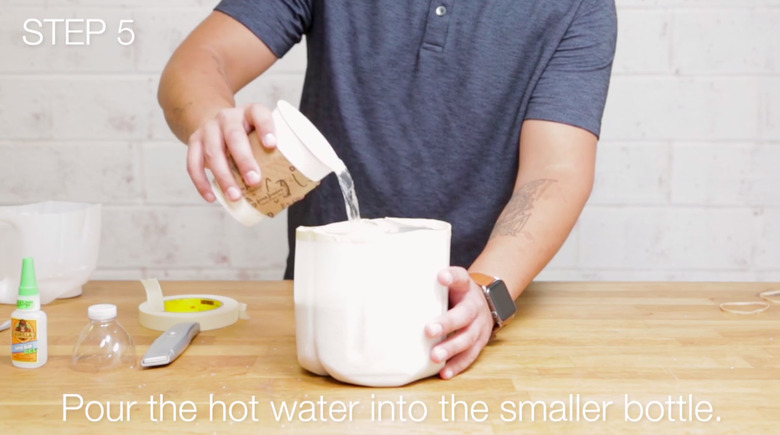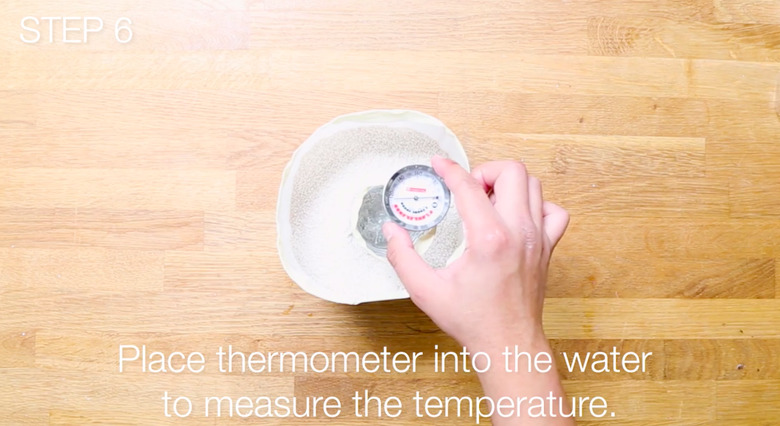How To Make A Homemade Thermos Bottle For A Science Fair Project
Thermos is the brand name for a particular type of thermal insulated flask. It basically consists of a watertight container placed inside another container with some type of insulating material placed between them. The inner container of a typical Thermos bottle is usually glass or plastic, and the outer container is usually metal. You can impress your science class by making your own flasks with plastic bottles and experimenting with different insulating materials to determine which one works the best.
1. Cut the bottles
Cut the tops off of three two-liter bottles with scissors to make them roughly the same height as the one-liter bottles. The larger bottles will serve as the outside of the insulated flask. Make sure the bottles are clean.
2. Tape the bottles
Apply masking tape around the perimeter of the cut edge to protect yourself from accidental injury.
3. Glue the bottles
Glue each one-liter bottle into the center of each two-liter bottle. Allow the glue to dry.
4. Fill bottles with sand
Fill the area between the two bottles with one of three insulating materials: fill one with sand; one with foam beads, such as those in a bean bag chair; and one with Polyfill insulation, which can be found at a craft store.
5. Fill center bottle
Fill each of the center bottles with the same hot liquid.
6. Measure the temperature
Measure the temperature of the liquid at regular increments for the next 2 hours. Record the measurements for interpretation at the end of the experiment.
7. Record your results
Evaluate the time versus temperature data for each bottle. Discuss which insulation material was more effective. Which material allowed the liquid to cool the fastest? Which retained the heat the longest? Discuss what this means regarding the insulating value (also known as the R-value) of the three materials.
Things Needed
- 3 one-liter soda bottles
- 3 two-liter pop bottles
- Masking tape
- Small amount of all purpose glue
- 3 insulating materials, such as sand, foam beads, and Polyfill insulation
- Thermometer
- Utility scissors
Cite This Article
MLA
Burns, Timothy. "How To Make A Homemade Thermos Bottle For A Science Fair Project" sciencing.com, https://www.sciencing.com/make-bottle-science-fair-project-8491812/. 21 July 2017.
APA
Burns, Timothy. (2017, July 21). How To Make A Homemade Thermos Bottle For A Science Fair Project. sciencing.com. Retrieved from https://www.sciencing.com/make-bottle-science-fair-project-8491812/
Chicago
Burns, Timothy. How To Make A Homemade Thermos Bottle For A Science Fair Project last modified August 30, 2022. https://www.sciencing.com/make-bottle-science-fair-project-8491812/

